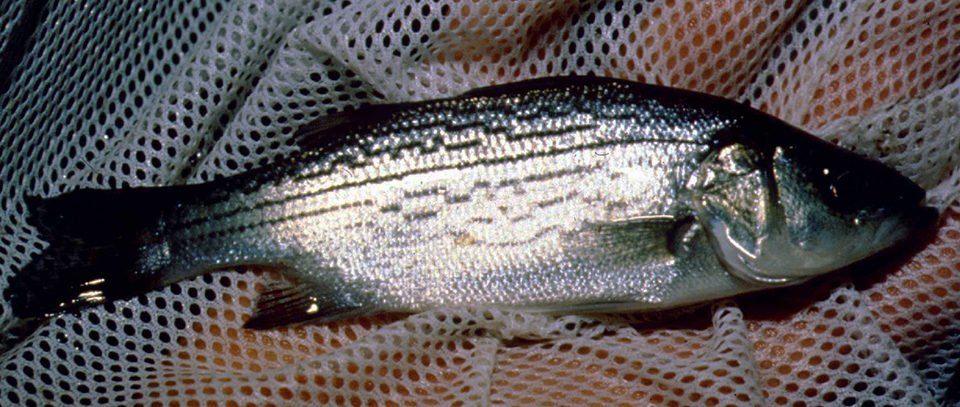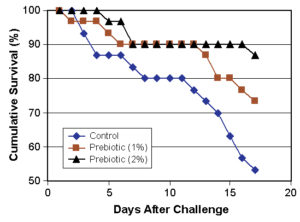The role of vitamins, immunostimulants, probiotics and more

Proper nutrition plays a critical role in maintaining the normal growth and health of aquacultured fish. Based on current knowledge, a variety of dietary factors and nutritional strategies can influence fish health.
Nutrients
Research with several fish species has established that immunocompetence and disease resistance can be compromised by deficiencies of nutrients, especially amino acids/proteins, certain vitamins and minerals. Sufficient input of high-quality protein with balanced amino acid composition is essential for optimal growth and health because various immunological factors are specific proteins or protein-catalyzed products. In addition, adequate levels of micronutrients such as vitamins and minerals should be supplied in prepared diets to support optimal growth and production efficiency in aquaculture.
Nutrients involved in antioxidative defense mechanisms, including vitamins C and E, as well as the mineral selenium, are important for maintenance of the immune functions of aquacultured fish because immunological cells such as macrophages and lymphocytes are sensitive to oxidative stress. Based on recent studies with terrestrial animals, other micronutrients such as vitamin A, copper, and zinc are required for gene expression of immunological cells, although research in this area with fish is in its infancy.
Sufficient supply of all required nutrients and effective monitoring of the levels and availability of these nutrients after processing are basic considerations to provide nutritionally complete and balanced aquafeeds.
Nonnutritive immunostimulants
In recent years, interest has heightened in the potential use of natural or synthetic compounds which may activate immune responses and thus enhance the disease resistance of aquacultured fish. Most of the immunostimulatory compounds examined in fish have shown immunoenhancing potential by improving the nonspecific immune responses considered the first line of defense against invading organisms.
The responses of macrophages – cell migration, phagocytosis, and bactericidal activity – as well as changes in leukocyte numbers and the activation potential of cells as measured by tissue levels of oxidative radicals and enzymes, are often used to assess nonspecific immunity.
Brewer’s yeast
Brewer’s yeast is a natural feedstuff that contains beta-glucans, chitin, mannoproteins, and nucleic acids, all of which have been found immunostimulatory in fish. Because yeast byproducts are completely natural, they hold great promise for use in aquafeed. The beneficial influences of dietary brewer’s yeast on resistance in fish species from rainbow trout to Aeromonas salmonicida have already been demonstrated.
Although commercial preparations of beta-glucans have received considerable attention as immunostimulants for fish culture, recent data on rainbow trout and hybrid striped bass indicates dietary brewer’s yeast may be even more effective than beta-glucans in enhancing immune responses and disease resistance when administered in diets.
Nucleotides and oligonucleotides
Nucleotides and oligonucleotides hydrolyzed from yeast have also shown noticeable positive effects on both the specific and nonspecific immune responses of some fish species and resistance to pathogenic viral, bacterial, and parasitic organisms. Results with rainbow trout, Atlantic salmon, common carp, hybrid striped bass, and tilapia consistently show positive responses in terms of immunostimulation and enhanced disease resistance when nucleotides are supplemented in diets.
Dietary immunostimulants
Levamisole is a broad-spectrum antihelminthic drug widely used to control internal parasites in terrestrial animals. It also has been used in studies on fish with the aim of enhancing nonspecific immune responses or serving as an adjuvant with vaccines.
Due to its low cost and low residue in fish, levamisole holds promise as an immunostimulant. Relatively low doses of 100 mg levamisole per kilogram diet enhanced the growth of hybrid striped bass and gilthead sea bream, and improved immune responses including respiratory burst, phagocytosis, and lymphokine production. The enhancement induced by dietary levamisole in resistance to infectious diseases has not been consistent, which may depend on the specific mechanism of infection.
Other dietary immunostimulants, including chitin, lactoferrin, peptidoglycan, liposaccharides, sulfated polysaccharides, beta-hydroxy-beata-methylbutyrate, and certain bacterins and fungal products, have been reported to experimentally enhance fish health, but additional supporting research is warranted.
Prebiotics and probiotics

Dietary supplementation with probiotics or live microorganisms such as bacteria or yeast to alter the environment of the gastrointestinal (GI) tracts of fish enhances growth as well as reduces disease risk in some fish species. Supplementation of prebiotics or dietary ingredients which favor the growth of certain beneficial bacteria in the GI tract also has been investigated.
The authors’ laboratory recently evaluated graded levels of a commercial prebiotic mixture of partial autolyzed brewer’s yeast, dairy ingredient components, and dried fermentation products, in fishmeal-based diets with hybrid striped bass. The prebiotic was added to the control diet at 1 and 2 percent levels, with each diet fed to juvenile bass for four or seven weeks.
After seven weeks, enhanced growth performance and feed efficiency were generally observed in fish fed the supplemented diets compared to the control animals. After four weeks of feeding in trial 2, growth and feed efficiency were not significantly affected by the various dietary treatments, although some immunological responses such as neutrophil oxidative radical anion production and extracellular superoxide anion production of head kidney macrophages were enhanced in fish fed diets supplemented with the prebiotic.
All groups of hybrid striped bass fed the supplemented diets showed enhanced survival of 73.3 to 90 percent 17 days after bath exposure to Streptococcus iniae as compared to 53.3 percent survival in fish fed the control diet (Fig. 1).
Administration protocols
Although various dietary compounds have shown potential to enhance fish health, it should be considered that some nutrients and nonnutritive immunostimulants have potentially negative side effects and even toxicity when administered at improper levels or for a prolonged time. This phenomenon is particularly noticeable with certain trace minerals and synthetic immunostimulants such as levamisole.
It is generally suggested that dietary administration of immunostimulants such as beta-glucans should be alternated with a nonsupplemented diet at approximately four-week intervals. Long-term administration may attenuate previously enhanced immune responses.
Further research into optimizing the dosage and length of exposure to various immunostimulants may allow dietary modulation of the immune response to be used as an effective and relatively inexpensive alternative chemical therapy in combating diseases in aquacultured fish.
(Editor’s Note: This article was originally published in the February 2004 print edition of the Global Aquaculture Advocate.)
Now that you've finished reading the article ...
… we hope you’ll consider supporting our mission to document the evolution of the global aquaculture industry and share our vast network of contributors’ expansive knowledge every week.
By becoming a Global Seafood Alliance member, you’re ensuring that all of the pre-competitive work we do through member benefits, resources and events can continue. Individual membership costs just $50 a year. GSA individual and corporate members receive complimentary access to a series of GOAL virtual events beginning in April. Join now.
Not a GSA member? Join us.
Authors
-
Delbert M. Gatlin III, Ph.D.
Department of Wildlife and Fisheries Sciences
Texas A & M University
College Station, Texas 77843-2258 USA[117,100,101,46,117,109,97,116,64,110,105,108,116,97,103,45,100]
-
Peng Li
Department of Wildlife and Fisheries Sciences
Texas A & M University
College Station, Texas 77843-2258 USA
Tagged With
Related Posts

Aquafeeds
A look at corn distillers dried grains with solubles
Corn distillers dried grains with solubles are an economical source of energy, protein and digestible phosphorus to reduce feed costs and fishmeal usage.

Aquafeeds
A look at phospholipids in aquafeeds
Phospholipids are the major constituents of cell membranes and are vital to the normal function of every cell and organ. The inclusion of phospholipids in aquafeeds ensures increased growth, better survival and stress resistance, and prevention of skeletal deformities of larval and juvenile stages of fish and shellfish species.

Aquafeeds
A look at protease enzymes in crustacean nutrition
Food digestion involves digestive enzymes to break down polymeric macromolecules and facilitate nutrient absorption. Enzyme supplementation in aquafeeds is a major alternative to improve feed quality and nutrient digestibility, gut health, compensate digestive enzymes when needed, and may also improve immune responses.

Health & Welfare
A look at tilapia aquaculture in Ghana
Aquaculture in Ghana has overcome its historic fits and starts and is helping to narrow the gap between domestic seafood production and consumption. Production is based on Nile tilapia.


